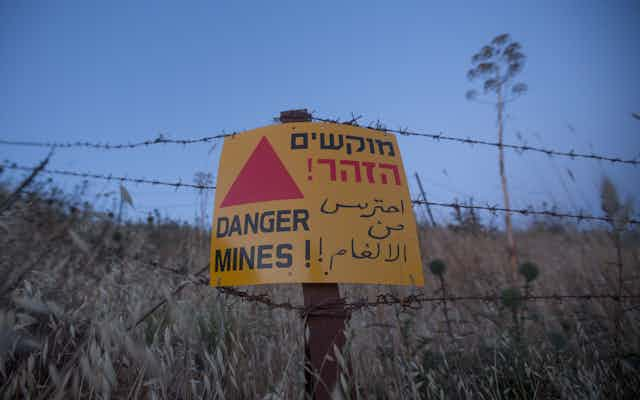It’s been 20 years since 133 states signed the Ottawa Convention banning the use of anti-personnel mines. Today, some 162 states are party to the convention. It was a huge step towards eliminating these heinous devices – but the work is far from done.
The two decades since the convention was signed have seen some successes. The use of landmines has declined worldwide; the convention prohibits not only their use in times of war, but their production, export and stockpiling. It paved the way for the 2010 Dublin Convention on banning cluster munitions, and helped create organisations that promote greater respect for the laws of war, among them Geneva Call, which works with non-state armed groups to keep them from using landmines and child soldiers. But some battles are not yet won.
While most countries have signed up to the Ottawa Convention, some of the world’s biggest military powers have not. Among them are Russia, China, India and Saudi Arabia. The US has also not signed up to the Ottawa Convention over maintenance of the minefields in the demilitarised zone on the Korean peninsula, though in recent years its military has stopped using and stockpiling anti-personnel mines.
Most dispiritingly and urgently of all, since 1997, landmines have killed or seriously maimed more than 100,000 civilians. Clearly, further measures are needed to deter their use. Now, Belgium is proposing to add an amendment to the Rome Statute of the International Criminal Court that would make it an international war crime to use landmines.
But what does the law actually say, and how can it be tightened?
Landmines as war crimes
In a new report, my co-researchers and I explain that landmines can amount to war crimes in certain circumstances. There are rules that govern their legal use: they must be detectable, equipped with self-destruct mechanisms, deployed only in fenced-off and clearly marked areas, and they must not contain anti-handling devices. In a nutshell, this means anti-personnel mines can amount to war crimes where they are used indiscriminately or cause unnecessary suffering.
We also suggest that the same applies to booby-traps and other improvised explosive devices. With anti-personnel mines increasingly prohibited and controlled, these devices are proliferating in conflicts around the world as armed non-state groups manufacture their own crude but lethal devices. To take one example, in Syria in 2016, some 14,301 civilians were killed or seriously injured by such weapons.
Under the laws of war, hostilities must be conducted according to certain principles meant to limit harm. Under these principles, anti-personnel mines can amount to a grave breach of international humanitarian law because they cannot distinguish between civilians and combatants.
This civilian-combatant distinction is a cardinal principle of international humanitarian law, intended to minimise harm to civilians by keeping violence a matter for combatants. Because anti-personnel mines explode no matter who stands on them, using them violates this principle. And after conflicts where anti-personnel mines are used, many of them remain left behind in the ground unexploded, meaning they continue to indiscriminately kill and maim civilians for decades.

Perhaps the most notorious case of this problem is Cambodia. Since the Khmer Rouge were defeated in 1979, more than 60,000 civilians have been killed or wounded after stepping on mines, and more than 25,000 have been left amputees.
Anti-personnel mines can also cause superfluous injury or unnecessary suffering, which international humanitarian law specifically prohibits. This means they don’t just kill or injure enemy combatants for tactical purposes, but also cause harm which serves no military purpose. Landmines often explode upon contact with a person’s foot, causing fragments to be fired upwards and sidewards. These fragments carry dirt and bacteria that can cause secondary infections, meaning victims can lose an infected limb or be permanently blinded and deafened.
Clearing up
With the territorial defeat of the so-called Islamic State in Iraq and Syria, state forces and other personnel have a difficult task of clearing explosive devices left by the group in cities like Mosul and Raqqa. Briton Jac Holmes was killed doing such work in Raqqa in October this year.
Destroying anti-personnel mines and other explosive remnants of war isn’t just a job for states. Non-state armed groups also have a role to play. The NGO Geneva Call has successfully persuaded 49 such groups to stop using these devices, and even to help in cleanup efforts; as a part of the peace process in Colombia, members of FARC have been working with the Colombian government and NGOs to clear the country of mines altogether.
These efforts prove that getting rid of landmines for good is not some impossible dream. But it’s time for the law to catch up. Explosive devices are still killing civilians years after wars have ended, and more must be done to make sure everyone can enjoy the peace safely.

